
Gallery Photographers
Partner
Artists-in-Residence
Image City Feature Articles
Gary's Photographic Tips
Newsletter Archive
If you are unable to visit our gallery and would like to purchase photographs from this preview or others in the gallery, please contact the gallery and call 585-271-2540.
Peter Marr's Picks of the Show
Scene Together: Prints and Paints
July 13 - August 7, 2011
click here to return to the details of the exhibit
All images copyright by the individual photographers
Corner Conversations by Dick Lubey This is truly a delightful oil painting of a plaza venue that is a hub of activity, and a favorite meeting place for locals to come and meet each other, and to buy flowers or any other wares being sold at the corner stand. The stellar colors and ambience that the picture exudes, reflects both summer warmth, and thankfulness from all of the people as to how good it is to be healthy and to see old friends. Here, the artist is able to capture all of this so exquisitely in the comfort of his studio, even though when the scene was captured with the camera, the weather was decidedly inclement. With the use of a range of lighter tones and splashes of bright colors, and extending the corner scene to a much larger canvas with inclusion of buildings and background people, Dick was able to give us a much more detailed appreciation of the area. Our eyes are not just confined to the grouping around the flower stall, instead, we can admire much more of the plaza itself, whilst still recognizing that the corner flower area is still the favorite meeting place for friends and visitors alike. This is a creative and impressive oil painting, and a great advertisement for all of us to hope that one day we may visit this enchanting area. Out of the Rain by Marty Nott This photograph is a delightful, creatively seen and captured plaza corner, that in spite of the rain, exudes warmth, abundant color, and a personality that is truly memorable. The displayed flowers, containers and hanging baskets, with their myriads of shapes, colors, and I am sure fragrance, all together give an uplifting and inspiring presence, offsetting the stark building columns and the formal flagstones of the courtyard. Importantly, the corner scene features four people who are sheltering from the rain under the large umbrella-like canopy of the flower stand. From the faces of these people we see happiness, love and respect for each other; certainly, the inclement weather is not going to deter them from enjoying these precious moments together. Marty has captured this idyllic setting impressively, just as Dick Lubey painted this part of the plaza so eloquently. Both pictures reflect the warmth, color and exuberance of the local people, and both are superb examples of the talents and discipline in their respective artistic areas. Obviously the photographer does not have any control of the weather, and unless one can visit an area several times, he has to accept what nature has provided, in this case, rain. Dick on the other hand can add as much sunshine and color as he pleases or needs to. Although this is an obvious difference between photographing and painting there is another very important variance. A photographer is looking for the ideal composition, and is framing the picture through the camera, isolating what to him may be unessential details. On the other hand, a painter may isolate areas or details, but he doesn’t cut them out in the same way. In other words, he may work in a rectangle, but the edges of the rectangle can be anywhere he wants. Corner Store by Dick Lubey In Dick’s resplendent oil painting of the “Cornucopia” store, so wonderfully captured in Marty’s photographic print, we are able to step back a little, to experience more of the surroundings, so that we can get a broader perspective of the store’s location. Certainly we experience the familiar highly congested entrance, filled to the top, and bursting out on both sides with items for sale. The daubs of intense, rich oil colors give an amazing impression of the immense variety of goods for sale, and impart vibrant textures and shapes that are truly awesome. Here we experience the creative and expressive exhilaration of oil paintings, where you do not need intricate detail to enjoy such a wealth of colorful inspiration. The one intriguing feature of this striking oil rendering is that the artist has expanded the visual rectangle by including part of the walls on either side of the door. In using a more wide-angled viewpoint and pushing the displayed goods closer together, only the very top of the door is visible, giving the impression that the store is closed for the day, which concentrates our vision on the myriads of shapes and colors of the displayed products. The inclusion of some graffiti on the one wall, and symmetrical patterns under the arch of the other wall, is further evidence of how a distinguished painter likes to expand spatial detail to give us more relevant information. Both the photograph and the oil painting of this fascinating corner store are remarkable in their own right, and one would certainly want to own and display both of these creative images side by side, as they are in the gallery. Whether you prefer the close-up version with its emphasis on incredible detail as in the photographic print, or the highly colorful and more impressionistic approach of the oil painting is purely a matter of personal choice. For myself, I love both of them. Cornucopia by Marty Nott I obviously must like corner scenes filled with detail, for in addition to the plaza flower stall scene that I commented on in one of my other selections, here we have a corner store entrance that is just bursting at the seams with an abundance of eye-catching products for sale. Marty has captured the very essence of a local store that sells almost everything, from fresh fruit, olive oil, wine and even milk, together with baskets and linens that entice you to buy all the goods that you need. This is local advertising at its very best, and although we can only peek a little through the open door, you know that there are countless wares inside, filling every available shelf and floor space that is available. This delightful image has a richness of detail and color that is truly impressive, and we certainly admire the store owner’s exuberance and salesmanship, for enlightening the somber, rugged stone architecture of the outside facade, with an enthusiastic blaze of mouth-watering products. If he could sell anything else, including the kitchen sink, he would. I would not be surprised if even the crates on the ground could be purchased as well. There is so much to see and enjoy here, and I hope that every observer takes the time to try and identify as many items as possible that are for sale outside the store, items which are richly detailed in Marty’s stellar print. Distracted by Dick Lubey This masterly oil painting is in many ways the true companion to “The Look” photograph that is displayed just to the left on the exhibition wall. In its own right, the painting is both charming and expressive, from the design, the lovely range of tones and color palette, to the imaginative use of brush strokes. For me, the huge advantage that the artist had over the photographer was “TIME.” The camera only sees what you see, and Marty captured the decisive moment superbly, so there are no ambiguities. In “Distracted” Dick had a lot of time in his studio to capture such a decisive moment, which he did in exemplary fashion. The difference in the oil painting is that there are real ambiguities, which you may never come to grips with, that is what is so tantalizing, for you keep looking back. As you start looking, you are drawn into the picture, and there is a movement going on which keeps changing. The man, sitting restfully on the ledge reading a book is suddenly aware of a man and woman framed in the background of a sun-drenched alley. His first thoughts are probably wondering whether the couple are lost, and whether they might need his help. Intriguingly though, with his hand to his face, the once avid book-reader’s attention is now directed at the attractive lady. Suddenly he wants to know more about the couple, and in particular, the lady in question. In both this artistic oil painting and “The Look” photograph, there is a fascinated observer. In the latter, the young man makes use of a truly magical moment to instantly direct his inward thoughts and hopes to the young girl in the store. In the former, the “Distraction” of the couple leads certainly to uncertainties, and it is left to each observer to form their own opinions on what the book-reader is thinking about. That is the real beauty of a painting, for it contains time, and leads to a genuine scrutiny of the experience of looking. Marty and Dick have explored and captured time using different media, and have done so superbly, to give us two memorable images. The Look by Marty Nott The author has captured a magical moment in time, when a young man looking through the window of a ladies’ lingerie boutique is captivated at the sight of a store employee. This entrancing stare is just precious, especially as one initially scans the display of intimate undergarments in the store window, a layout that is highlighted by the mannequin at the center. The charm and power of this expressive image is that we are just not looking at titillation, for the young man is oblivious to the underwear display, and is looking directly at the young girl. Even though we cannot see the man’s eyes, we can see the expressive look in the girl’s eyes.To this observer, I have no doubt that there is an instant dramatic connection between the two, that is just fascinating and electric in the most enchanting way. This is a “Cartier-Bresson moment” par excellence, captured succinctly in a line from a well known song, namely “I only have eyes for you.” Yellowstone, 2006 by Helen Ellis This is an impressive print which strikingly shows both the majesty of nature, and its power and supremacy in the life and death struggle for survival in this unique part of Yellowstone. Here we see regimented columns of thin vertical tree trunks, devoid of branches and leaves, that reach way up into the unseen sky in search of every ray of sunlight that they can get in order to sustain growth. These trees grow this way because they use most of their energy for vertical enhancement, and because the soil they spring up from is sparse and nutritionally poor, so many succumb to nature’s disruptive forces. Thus we sadly see many of their former comrades lying lifeless and in disarrayed patterns on the ground, strewn haphazardly where they had fallen, awaiting for most of their compatriots to follow them in due course. If it were not for the new growth, the landscape would be stark and colorless, just lines of gray ghosts in an ever changing world. Happily and inspiringly, nature has begun to transform this once austere landscape with the introduction of new trees and foliage. In this lovely print, we see an undergrowth of small trees, filling every void around the once stately monarchs, breathing new life into this enigmatic landscape. The lovely lighting accentuates all the resplendent green and yellow hues, revealing every detail of the delicate branchlet and pine structures. This uplifting new growth springing up imposingly in the midst of all the gray sentinels, breathes new life and hope into this important area. The author’s creative vision has wonderfully captured an especial moment in nature’s revitalization. Frayed by Gail Rivera In photography, the use of diagonal vectors and bold primary colors are often cited as elements to grab a viewer’s attention, yet here, in this creative print we have none of the above. Instead, we have parallel vertical segments, each of which is distinct in its color and texture, yet together, they seem to flow in unison. The color hues are outstanding and the soft, non -directional lighting exquisitely accentuates all of the red, blue and purple shades to perfection. It is probable that we are looking at strips of metal siding, where time and the elements have induced extensive rust and corrosion formations. The end results are colorful patterns which have myriads of fine textures and surface features. There is one segment that has the most limited color palette, and it is also distinguished by having two prominent nail heads. The most dynamic feature which is set in the most colorful rusting section, is a narrow, interlaced metal chain, fixed in part by a metal clamp. The top of the chain is attached to a metal plate, which itself is held in place by four screws. The interesting feature of this chain is that the exposed top is frayed, resulting in a twisted assembly of wires. Although the chain is an immediate center of attention, the surrounds are so colorful and fascinating in their textured designs, that immediately our eyes encompass the whole print, which reveals an outstanding artistic image.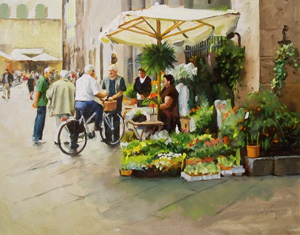
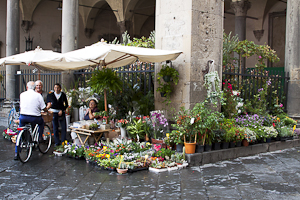
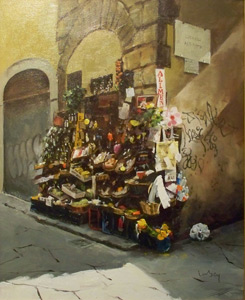
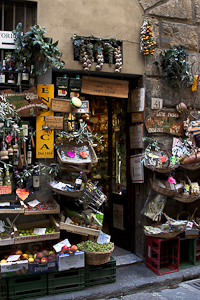
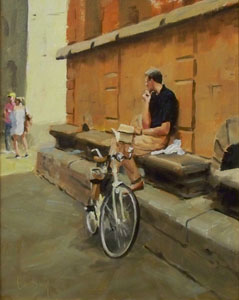
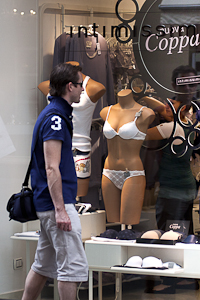
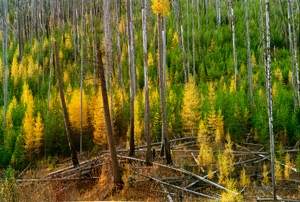
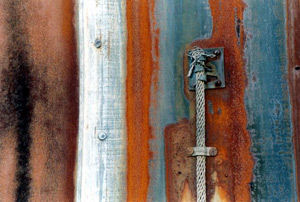
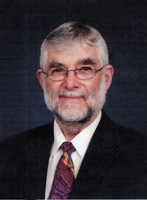
Peter MarrWe are very grateful to Peter for his thorough review and selection for Peter's Picks. Peter was born in England in 1935 and came to live in the United States in 1968. He worked for the Eastman Kodak Company for 34 years, retiring in 1998. During his employment and continuing into retirement, he has been an enthusiastic photographer. His photography has won him numerous awards throughout Kodak and in International Salons, including 5 George Eastman Medals, which is the top honor awarded to the most outstanding picture in the Annual Kodak International Salon. He has served as a judge in both local and international photographic competitions for the past 20 years, and is a Past president of the Kodak Camera Club and past chairman of many of the Kodak Camera Club organizations. In the past five years or so, he has devoted his photographic skills and interest into nature photography, notably bird photography. His bird photography has been the subject of several one-person exhibits, the most recent being at Ding Darling NWR, in Sanibel, Florida, The Roger Tory Peterson Institute in Jamestown, New York, and at the Webster Public Library in Webster, NY.
Image City Photography Gallery ♦ 722 University Avenue ♦ Rochester, NY 14607 ♦ 585.271.2540
In the heart of ARTWalk in the Neighborhood of the Arts